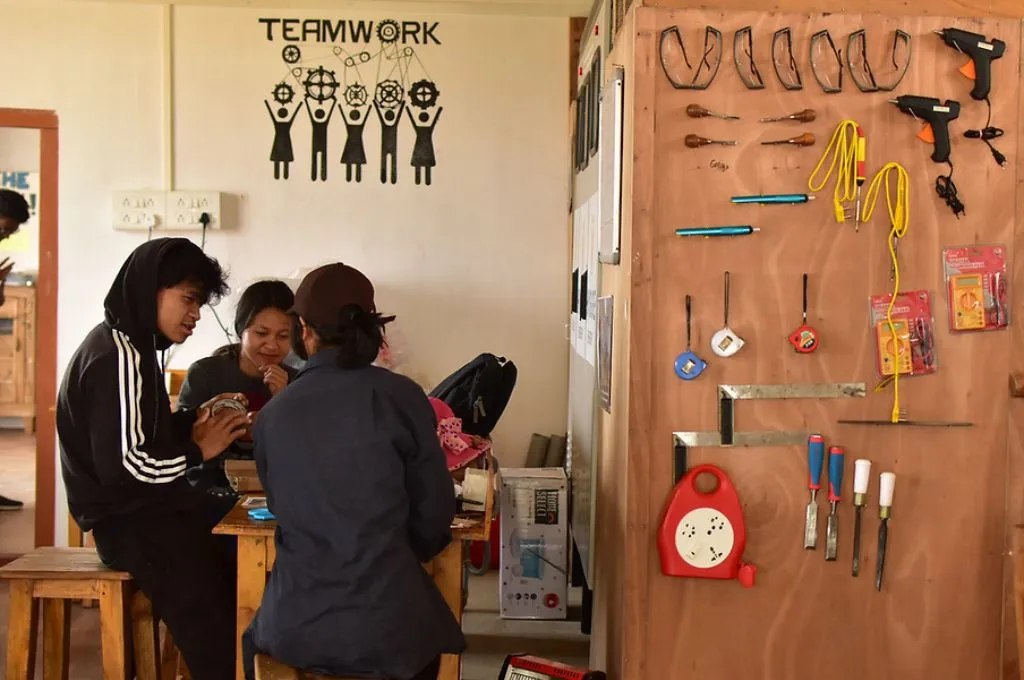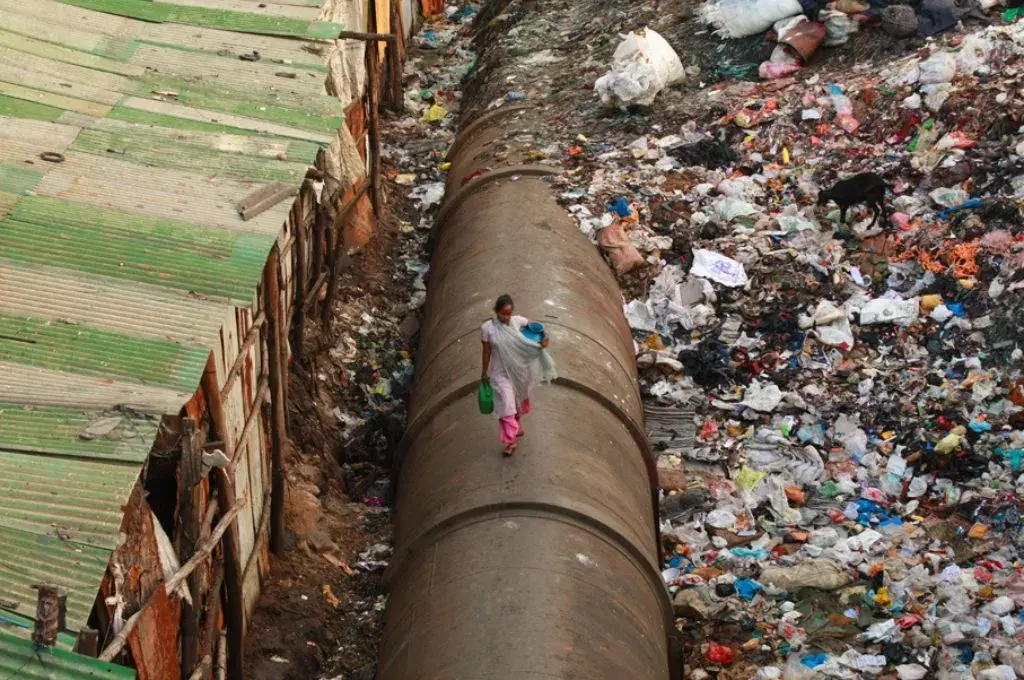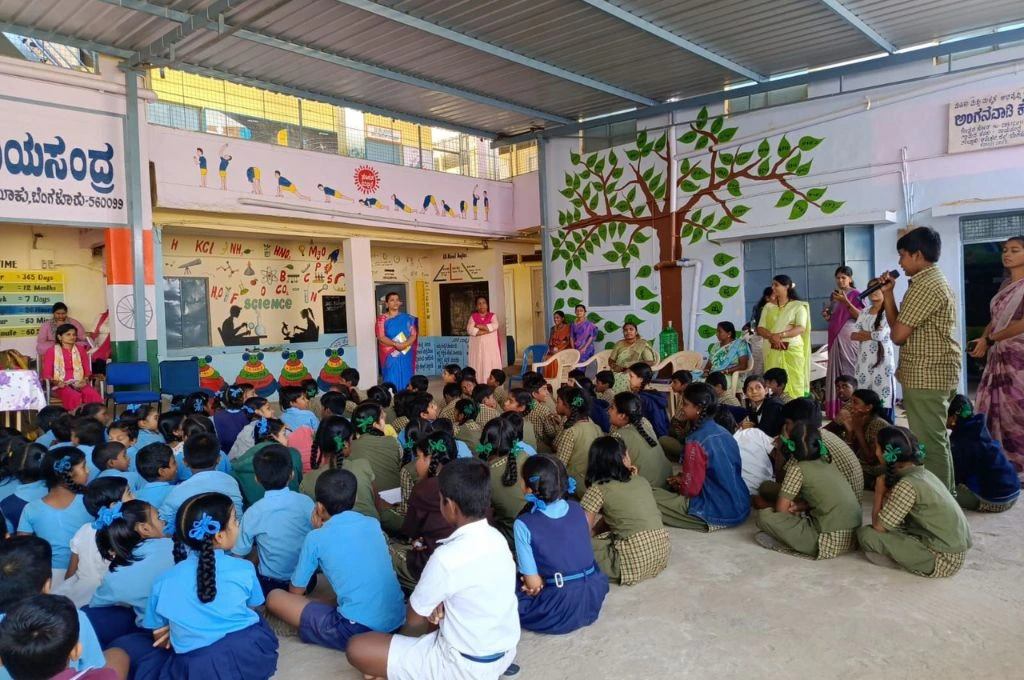Since 2018, Sauramandala Foundation has been supporting systemic change in remote communities in Northeast India, with Meghalaya as its base. We approach our work across education, health, livelihoods, and more with a focus on climate resilience and gender equity.
We co-design solutions with communities and then partner with the government to scale these solutions. This stems from our belief that systemic shifts require building a strong relationship with the government, which itself is based on both parties being transparent with and understanding each other’s roles, strengths, and limitations.
Here are some of our core learnings that can be crucial for any government–nonprofit partnership.
1. Parallel problem-solving works better than sequential scaling
We’ve learned that solving different problems in parallel can work better than tackling them one by one and then scaling the solutions. Often, there is a temptation to perfect a solution in a controlled environment and then replicate it. However, government systems are complex and interconnected. A single-point solution, however brilliant, can falter if surrounding bottlenecks remain.
Consider the approach taken to address challenges associated with women cooking over open fires. Much of the discourse in the social sector focuses on the impact of open-fire cooking on women’s respiratory health; the time, money, and effort spent in fuelwood collection; and the inherent drudgery. Nonprofits often work towards community-wide adoption of sustainable cooking methods such as LPG and electricity. However, such initiatives may not succeed in Meghalaya because they overlook the multifaceted role of smoke in tribal cooking practices across the state. Smoke plays a crucial part in the preservation of meat and seeds, curing of bamboo equipment, and historically, preservation of thatch roofs. Consequently, a clean cook stove, presented as a singular solution to mitigate the respiratory impact of smoke and enhance fuelwood efficiency, necessitates a fundamental shift in food preservation methods, taste profiles, seed storage practices, and the construction and curing of farm and fishing equipment.
Therefore, in our work, we advocate for finding out the pain points across the entire value chain and helping the government problem-solve holistically. We have felt the need for the value chain approach when designing the Chief Minister’s Youth Centres (CMYCs)—free-to-access open learning spaces across rural Meghalaya aimed at helping young people develop innovation, problem-solving, and design skills. At CMYC, Sauramandala’s role was to manage recruitment and training of facilitators and day-to-day operations during the pilot phase of the project. This allowed us to test the concept, build processes, and understand what worked on the ground before handing the initiative over to the government. We started two pilot youth centres. Later, the government scaled the project to 22 centres, and over the next three years, further committed to expanding it to all 64 blocks in the state.
The government often grapples with issues at a much larger scale than most nonprofits.
However, some of the challenges—related to staffing, operations, and youth engagement—that we observed in just two centres were multiplied many times over when the government scaled it across districts. A small issue, say, delayed reporting or low attendance, at two centres can be managed through field presence. But when the same issue appears across 64 centres, it becomes systemic. The scale of the government’s operations means even minor design flaws or inefficiencies are magnified, making it difficult for them to innovate midstream or troubleshoot granular problems.
It’s necessary to remember that the government often grapples with issues at a much larger scale than most nonprofits. So it is harder to innovate on singular aspects and easier to scale what’s known and integrated. This means that programme designs that work for nonprofits in isolation often won’t work for systemic adoption without this broader approach.

2. Balance innovation with scale, and let the government take ownership
Civil society organisations (CSOs), nonprofits, and private entities are often nimble and well suited for innovation, because they operate at a smaller scale and are designed to solve for gaps where the government and market have failed. Becoming too large is counter-intuitive and would mean creating a parallel system. The government, on the other hand, excels at scaling proven solutions due to its vast infrastructure and reach. The key is to transition at the right point.
In addition, for an initiative to be truly sustainable and achieve widespread impact, the government must feel a deep sense of ownership. This often requires nonprofits to step back, letting the government lead and allowing them to brand and champion the success. For instance, if the pilot youth centres that Sauramandala designed become the face of a government programme like CMYC, that’s a victory for scale. Currently, CMYC is fully branded, funded, and operated by the government. Our team still supports implementation, but the face of the project is entirely the government.
This approach aligns with the understanding that for long-term sustainability, programmes need to be embedded within public systems, and not be perpetually reliant on external organisations. When the government owns it, the solution has a much greater chance of enduring.
3. Transparency fosters trust
Many nonprofits fear that acknowledging failure will damage their credibility with government stakeholders. But in our experience, the opposite is often true. Government officials work with complex, unpredictable realities every day; when we share what hasn’t worked and how we’re adapting, it builds trust and positions us as honest collaborators, not just service providers.
For example, during the early phase of the CMYC pilot, we included both structured STEM labs and open learning zones. The labs were designed to offer as many options as possible, assuming learners would be able to choose between the two components—STEM and self-directed learning—based on their interests. However, we realised that the day-to-day operations and approaches of the two formats were so different that learners were unsure which of the two would serve them better in the long term. This confusion diluted the identity of the space.
We spoke about this at our review discussions with government partners. We explained what we learned and shared why we were pivoting to a simpler, curiosity-led model—one where learners are encouraged to explore topics based on their own interests, experiment without rigid instructions, and build skills through self-directed projects rather than fixed, preset curricula. This openness was well received and helped strengthen the partnership.
4. Test, measure, and adjust to learn quickly
Usually when nonprofits run a programme, there are early insights such as patterns in target population attendance and engagement levels, or even in the form of team reflections and community feedback. While these insights cannot replace long-term evaluations, they can help us learn and adapt quickly, especially when engaging with dynamic systems like the government. We have observed that when working with the government, small but constant feedback is more useful and can help the government make incremental changes accordingly.
There’s always a risk of misreading early signals.
Therefore, it is important to communicate early insights to government partners. For example, at CMYC, we noticed early on that open-ended learning sessions saw much higher engagement than structured ones, because they allowed cross-learning between young people. Instead of waiting for formal data, we simplified the design of the centres through steps such as reducing rigid scheduling and giving facilitators the freedom to shape sessions based on participants’ interests and local context.
But there’s always a risk of misreading early signals. To manage this, it is important for nonprofits to look for patterns and not one-off incidents, test small changes before a wider roll-out, and involve field teams and government partners in interpreting what they observe.
5. Governments must equally invest in the partnerships
As with any partnership, it helps when the government also invests in working closely with nonprofits by enabling policy environments and supporting collaborative ecosystems. This support can take many forms, such as:
- Policy-level openness to pilots, where the government is willing to experiment and test new ideas in partnership with trusted organisations.
- Clear points of engagement within departments, so that nonprofits aren’t stuck navigating opaque processes or reinventing partnerships with every new administration.
- Timely access to data and decision-makers, which enables field insights to connect with systemic action.
- Flexibility in funding mechanisms, which allows the transition of promising models from philanthropic pilots to publicly funded programmes without losing momentum.
Above all, what nonprofits need most is a relationship built on trust, shared goals, and mutual respect—where the government doesn’t see them as implementers but as co-problem-solvers. That’s when collaboration becomes transformative.
—






